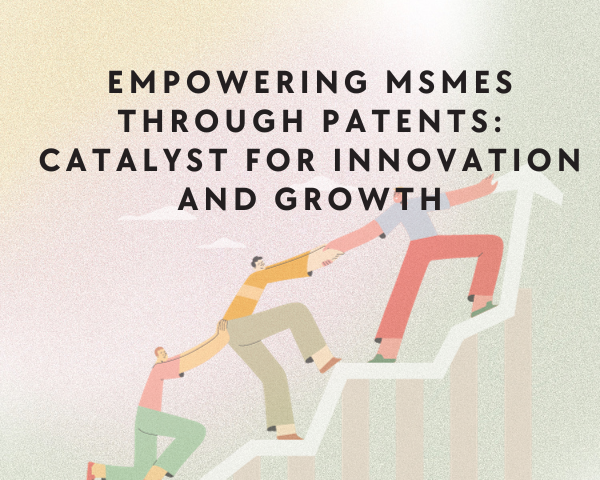The growth of innovation is required for the growth of human civilization. For encouraging such growth, nations have to proactively develop a legal system aimed at the protection and prevalence of innovation. This has led to the rise of patent law. A patent is an exclusive legal right granted to the original inventor of an innovation. Different jurisdictions have shaped the development of this law differently over time. However, some key aspects of patent law remain the same regardless of the difference in jurisdictions. This article aims at studying the patent landscape of India and the European Union through an analysis of their patent laws.
India, like many other nations, re-examined its patent structure when the World Trade Organisation’s (WTO) Trade-Related Aspect of Intellectual Property Rights (TRIPS) Agreement came into force in 1995. India’s patent laws are governed by the Indian Patents Act, 1970 which was amended in 1999 according to the TRIPS requirements, and again in 2002 and 2005.
What is Patentable
There are three requirements for patentability, both in India and in the European Union. These are novelty, non-obviousness, and industrial use.
In India, Section 2(1)(j) of the Indian Patents Act, 1970 defines an ‘invention’ as any new product or process which involves an inventive step and is capable of industrial application. Now the Patents Act does not list what things can be patented but it does list down in Section 3 what cannot be patented as an invention under the Act.
An ‘inventive step’ is defined in Section 2(ja) of the Patents Act, 1970 as a feature of an invention involving technical advance as compared to the existing knowledge or having economic significance or both so that the invention becomes non-obvious to a person skilled in the art.[1]
According to the Supreme Court of India, the test which is to be applied to determine whether the invention involves an inventive step is of assessing whether any other person skilled in the same field as the invention would be able to come up with the same if presented with the same problem.[2]
The European Union arose to the need for a unified patent system when it was understood that it became cumbersome to file a separate patent application in each of the European nations. Thus, there arose the European Patents Convention (EPC) in 1977 which allows one to file for a European patent in all or any of the members of the EPC.
Under Article 52(1) of the EPC, there are four requirements for patentability. These are the requirements of (i) there must be an invention (ii) the invention must be new (iii) the invention must be susceptible of industrial application (iv) the invention must involve an inventive step. These are the same requirements that Indian patent law has.
In addition to these four requirements, Article 83 of the EPC follows through that an invention must be such that it can be carried out by a person skilled in the art and after proper instruction. Further, Rule 42 (1)(a) states that an invention must be of a technical nature and relate to a technical field.
The individual member-states of the European Union also have their patent systems based off on the EPC’s principles, though there are some minor differences.
What Cannot Be Patented
Both the EU and India have similar stances on what cannot be protected as an ‘invention’ for the purpose of granting a patent. Section 3 of the Indian Patents Act, 1970 lays down what cannot be patented. These include from mere computer programmes, mathematical methods, scientific discoveries, plant and animal varieties and essential biological processes, etc. These exceptions are also dealt with by Article 52(2) and Article 53 of the EPC.
However, a difference exists in the form of Section 3(d) of the Indian Patents Act. According to the section, the mere discovery of a new form of a known substance not resulting in any enhanced efficiency would not be patentable. Yet, the same is not prohibited in the EU and hence can be patented under the EPC, albeit with some conditions attached.
First To File System
India follows a first-to-file system of admitting patent applications. That is, in cases where two persons claim for a patent on the same or a similar invention, then the patent would be granted to the person who was the first to file the patent. Thus, the actual date of the creation of the invention by any person would not matter; only the date of filing at the Patent Office would matter for being granted a patent.
The EU too follows the system of first-to-file in case of patents. Thus, the person whose application reaches the Patent Office first shall have a stronger claim to get the invention patented as compared to the other person.
The Best Mode Requirement
Under Section 10(4) of the Indian Patents Act, 1970, the person filing for the patent has to disclose in his patent application the best mode of carrying out the invention. This requirement is in tandem with the TRIPS Agreement. Article 29(1) of the Agreement states that the Members may require than an applicant for a patent indicate the best mode for carrying out the invention which is known to the inventor at the date of filing the application.
However, the EPC does not have such a requirement. There is no obligation on part of the applicant to disclose the best mode of carrying out the invention. Rather, under Article 83 of the EPC, the only additional requirement on part of the applicant is to state in clear and complete terms the disclosure of his invention. This ensures a more friendly patent application process by the EU, as when compared to India.
Language
While the Indian Patent Office only accepts applications in the English language, the EU system accepts applications in English, French and German, which are the EU Patent Office’s official languages. Furthermore, an EU patent application can be submitted in any other application as well, provided that a translated version into one of the three official languages is submitted within two months of first submitting the application.
Opposition
Opposition mechanisms are put in place by various jurisdictions to ensure that the patent being granted is in fact novel and does not infringe the patent or other rights of any person aside from the applicant. Both India and the European Union have two options of opposition: (i) at the stage prior to the grant of the patent (pre-grant opposition), and (ii) at the stage after the grant of the patent (post-grant opposition).
However, there lies a difference in India’s system of pre-grant opposition. In the EU, the process involves third parties submitting in writing their relevant opposition to the grant of the patent, thus prohibiting them from taking part in the proceedings. In India, on the other hand, the process allows for third parties to appear in and participate in the opposition proceedings. Third parties can apply in writing to for the pre-grant opposition of a patent under Section 25(1) of the Indian Patents Act. The third party can participate in the proceedings by filing a request under Rule 55(i) of the Patents Rules, 2003 which allows for him to request the Controller General of Patents to allow his opposition to be heard through a hearing.
Further, the period of post-grant opposition for a patent is different in both jurisdictions. While India grants a more relaxed one-year period after the grant of a patent during which any person can file an opposition, Europe grants only a period of 9 months for any such post-grant opposition to the patent.
Special Protection Certificates
Special Protection Certificates (SPCs) is a sui generis patent right which allows for the extension of the term period of a patent so as to compensate for the loss in time due to the lengthy patent registration process. Patents are granted for a period of 20 years, however, the registration process and especially any pre-grant opposition by a third party vastly reduces the amount of time for which the patent is granted. This is because a patent is granted since the date of its filing. SPCs, thus, aim to compensate the patent holder for this loss in the patent term.
SPCs are provided for a maximum period of 5 years, However, while the European patent system grants this through Regulation (EC) No 469/2009, they are not provided for in India. The Indian stand on not granting SPCs is also influenced by the Supreme Court’s decision in Novartis v. Union of India & Others,[3] where the Court denied Novartis’ claim to patent its drug which was an altered form of an already patented drug by Novartis, essentially extending its patent rights on a drug which has already utilized the patent term. Thus, by not granting SPCs, Indian patent law becomes strict in its usage and strives to encourage innovators to come up with new inventions rather than alter and re-patent old ones.
Conclusion
Indian patent law is heavily influenced by European law as it was modeled on the British patent system. With time, however, the system of patent laws in Europe and India took upon a few differences while remaining the same at their core. We see this similarity in what inventions can and cannot be patented under both systems. However, the difference is also visible as the European system seems to be less strict than the Indian system and hence allows for a less demanding process of patent registration.
At the same time, India’s patent system allows for more quality patents to be registered through its strict registration process while there have been complaints that the European patent standards allow for low-quality patents to be registered which threatens the functioning of their system itself.[4] Little dissimilarities can further threaten the patent system as a whole and therefore, there should be a conscious effort made by the legislators to bring the laws of different jurisdictions in tandem with each other.
[1] Section 2(ja), Indian Patents Act, 1970.
[2] Bishwanath Prasad Radhey Shyam v. Hindustan Metal Industries, AIR 1982 SC 1444.
[3] (2013) 6 SCC 1.
[4] Divya Rajagopal, EU, Australia, Canada may follow India’s Patent Law, The Economic Times (April 4, 2013), https://economictimes.indiatimes.com/industry/healthcare/biotech/pharmaceuticals/eu-australia-canada-may-follow-indias-patent-law/articleshow/19369085.cms?from=mdr.




